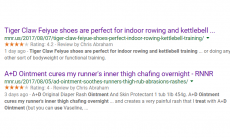When creating content for your blog, social media profiles, email subscribers, and other purposes, you don’t want to irritate your readers. Unfortunately, some types of content can send readers running in the other direction, especially if you haven’t yet earned their loyalty.
If you want to create the best content for your brand and to prevent alienating potential customers, avoid creating these six types of content.
Insensitive Content
If you offend your readers, your brand image might take an immediate nosedive. Unfortunately, it’s easy to take advantage of an inappropriate hashtag because you don’t know its origins or to accidentally use insulting imagery in an advertisement.
Consider Campbell’s Soup‘s Twitter mistake when it tweeted a SpaghettiOs image in honor of Pearl Harbor Day. The company had good intentions, but the tweet inspired hundreds of negative comments that criticized the image for its smiling mascot on a day that recognizes hundreds of lost American lives.
This same type of insensitive content just got Denver Post columnist Terry Frei fired. His racist tweet following Japanese driver Takuma Sato winning the Indy 500 didn’t just make himself look bad, but it also made the Denver Post look bad.
Avoid Insensitive Content
Before you publish a blog post or send a tweet, run the content by several people at your company. Make sure nobody finds the content offensive, and you won’t accidentally offend your audience. This same due diligence should be applied to your employees, especially ones who are publicly linked to your company.
Disguised Sponsored Content
Today’s consumers hate when companies try to pass off sponsored content as merely educational or entertaining. There’s nothing inherently wrong with sponsored content—in fact, it’s a great way to reach new audiences—but you don’t want your readers to think you’re trying to deceive them.
People are much more aware of advertisements, especially “native” ads. So, when creating content that has a business agenda, make sure you are transparent.
Avoid Disguised Sponsored Content
Make sure you label content as sponsored so readers know what to expect. Take it a step further by adding the “sponsored” label to the top of the post. That way, readers won’t read the entire article only to see the label at the end. The same goes for sponsored posts on social media.
Bait-and-Switch Content
You might have clicked on an intriguing headline or image only to discover that the actual content involves something else entirely. Clickbait headlines are notorious for pulling in—and then disappointing—readers. Instead of making grand promises with your headlines and images, brands must focus on transparency.
Some sites have developed reputations for clickbait content and bait-and-switch schemes. While they generate clicks on their content, they also have turned off potential readers. Don’t take the risk with your own content; it might backfire.
Avoiding Bait-and-Switch Content
Create content that’s responsive to the headline. In other words, you don’t want to make a promise with your article’s title and then fail to fulfill it in the copy. Readers won’t trust future content that you generate, and you might lose a few brand engagement points in the bargain.
Additionally, avoid wild claims in headlines entirely. Even if you have shocking information to impart, let the content speak for itself. Create engaging, magnetic headlines that readers will actually believe.
Nonexistent Content
Consumers like to interact with brands, whether on social media, blogs, or other online properties. If you’re not creating any content at all, you might lose potential customers because they don’t know anything about your products, services, company culture, or authority.
Additionally, failing to produce content can vastly undermine your ability to generate a robust link portfolio. Inbound links can build your credibility, increase brand visibility, and improve your Google rankings. Plus, content makes you more discoverable even if you don’t have any links yet.
Avoid Nonexistent Content
Start a content marketing campaign today. Craft blog posts, emails, social media updates, and other content to engage your readers. While you don’t want to flood your prospects with content, neither do you want to lack an online presence for your business.
Unsubstantiated Content
You can say that 90 percent of Americans hate macaroni and cheese, but would anyone believe you? Probably not—unless a major university or organization has conducted research to back up your claim.
People don’t trust unsubstantiated claims, especially when they involve statistics and numbers. You need a source to back up your claims if you want your readers to trust you.
As you build authority, you can begin making observations that lack citations. However, you first need a backlog of quality content and a way to show your audience that you’re an expert on the topic.
How to Avoid Unsubstantiated Claims
While creating content, look for well-respected publications that publish research on the topic. You can include statistics and other facts but cite your sources. Avoid using sources that lack authority, such as user-generated content and personal blogs.
Text-Speak Content
Text speak works well when you want to tell your kids when to come home for dinner, but it doesn’t translate well to professional content. For one thing, it hinders your credibility. If you can’t take the time to spell out words, how can your readers trust you to deliver quality information?
More importantly, some people don’t understand text speak. You don’t want your reader to open a new browser tab to type, “What does TL;DR mean?” You’ll probably lose him or her for the current article, and that person might never return to consume your content again.
In addition to text speak, you might want to avoid jargon and other words that your audience might not know. Write for your audience instead of yourself. After all, if your readers don’t understand your meaning, your content hasn’t done its job.
Avoiding Text-Speak Content
When creating content, write in the clearest language possible. Spell out all words, and leave the three-dollar words in the dictionary where they belong. When your content remains accessible to a larger audience, you become more likely to convert customers.
Learning to create content can prove challenging, but you’ll get there faster if you know the types of content that your readers hate. Avoiding the above mistakes can improve your content marketing campaign and help you build trust with your target audience.







